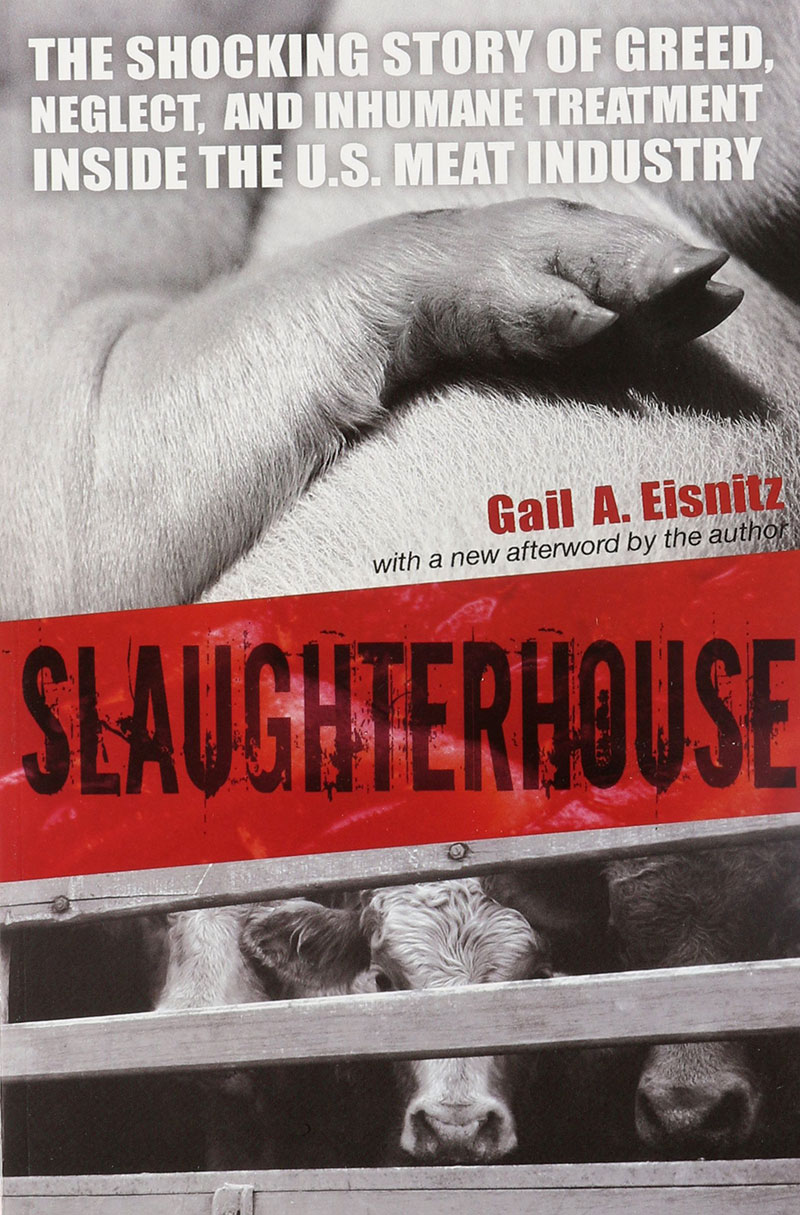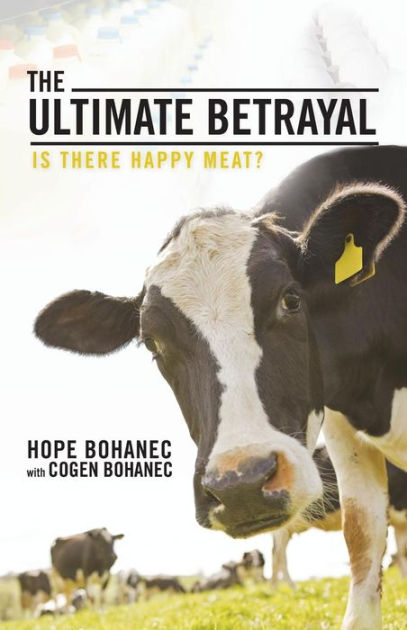DAMN DAIRY by Karen Davis, PhD
This article derives from an impromptu comment I posted on September 8, 2017 following an article in Animals 24-7: “What is ‘the dairy industry’?”

All I ever had to see of the dairy industry to hate it were images of calves torn from their mothers to be isolated, tremblingly, in solitary crates and hutches. All I ever had to hear were the mothers crying for their stolen newborns. This is not just big dairy operations; it is dairy farming. I remember back in the 1970s being taken by a friend to a small dairy farm in Pennsylvania and seeing the cows and the mud and the cement milking "parlor" and the milking machinery. That was my first glimpse of a bizarre and sickening business considered by everyone I grew up with as "normal." In fact, it wasn’t “considered” at all.
Whenever possible, I post comments to food section articles in The Washington Post and elsewhere pushing back against claims that the mammary milk stolen from mother cows and goats is "necessary" for human calcium; in reality, interspecies mammary milk is not even digestible by the majority of the human population. Even if it were, the business would be what it is, ugly. Despite the machinery, packaging and other things between themselves and the cow or goat, consumers of mammary-gland products are essentially sucking the nipples of a nursing mother robbed of her baby and her baby’s birthright.
I'm one of those people who never realized for the longest time that in order to produce milk, a cow, like all mammals, has to be pregnant. Reading "The Cookbook for People Who Love Animals" in 1983 turned on a light bulb in my brain. That cookbook described how dairy cows have been genetically manipulated to produce such an unnatural amount of milk for human consumption that their udders drag on the milking parlor floor and workers tramp on those swollen, dragging udders without a thought.
The cows, meanwhile, are drained of the calcium they need for their own bones, which are being depleted in order to produce milk for cheese pizzas and anything else it can be poured into for profit. Like hens manipulated for excessive egg shell production, dairy cows develop osteoporosis and painful lameness. They develop mastitis, a painful infection in their udders that leaks pus into their milk. A man who grew up on a family dairy farm in Maryland once told me that they sometimes inserted large antibiotic syringes directly into the cow’s udders to treat the infection.
The bodies of dairy cows are disproportioned by the weight and drag of their abnormal udders, and the cows have to be gotten rid of as soon as they no longer pay their way. Like hens bred for egg production, the cows’ bodies are mere envelopes for their ovaries; after that, they’re done with.
In her book Slaughterhouse, Gail Eisnitz writes that every hamburger contains about 100 “spent” dairy cows. Think about that the next time you pass by the wormy messes in the meat display counter.

Slaughterhouse was first published in 1997. Twenty years ago, Gail Eisnitz bore witness to events that are the same today as they were then: Your worst nightmares are “normal agricultural practices.” (See my review of Slaughterhouse.)
Articles I’ve read in agribusiness publications about cows, chickens, turkeys, pigs and other farmed animals being locked in a building in which a fire broke out, quote the “humane” family farmer: "At least no one got hurt." I recall an article about a small dairy farm's cows – those who did not die in the barn fire but were suffering badly from smoke inhalation – being held without help on the farm until the auction truck came to take them away.
Farmers are not sentimental about "their" animals, and this is a source of pride with them. Yet they have no problem creating smarmy, cloyingly sentimental and dishonest ads on TV and elsewhere about their "wholesome" enterprise and their "humane" animal care – anything to anesthetize the public. Each time I see one of these "dairy pure" types of ads with a farmer holding an inert newborn calf (just taken away from his or her mother), I want to puke and weep with sadness and disgust.
I want all forms of animal agribusiness to be abolished forever asap. I support whatever will make that happen. I will never stop working for an animal-free food supply and for animals themselves until I die trying.
Karen Davis, PhD, President, United Poultry Concerns
Watch and Share GRIEVING MOTHERS, 3.98 minutes.
- YouTube: Grieving Mothers of the Dairy Industry
- Facebook: Grieving Mothers of the Dairy Industry
Order from UPC:
The Ultimate Betrayal: Is There Happy Meat?
By Hope Bohanec

The Ultimate Betrayal lifts the veil of secrecy surrounding animal farming, offering a rare look inside the world of alternative animal agriculture. Drawing on research, worker and rescuer testimony and meeting the farmed animals themselves, The Ultimate Betrayal explores the recent shift in raising and labeling animals for food and the misinformation around this "new way" of farming. Small-scale farms are the latest craze and various methods of alternative animal agriculture carry feel-good labels. It is now popular to say that your eggs are cage-free and your meat is organic. But is this trend really the answer to the problems of raising animals for food? What do the labels really mean? Are these products truly humane, environmentally friendly or healthy? The Ultimate Betrayal offers answers to these critical questions. The Ultimate Betrayal - $14.95